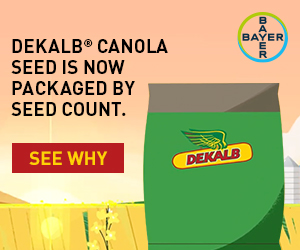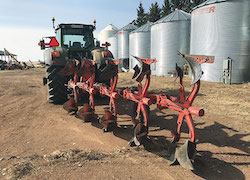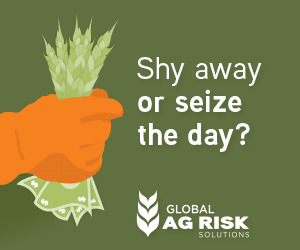| |
| |
 |
 |
| |
 |
|
@{mv_date_MMM d, yyyy}@ |
|
| |
 The initiative is intended to guide government policies while reflecting farmers’ priorities.
» Read more...
The initiative is intended to guide government policies while reflecting farmers’ priorities.
» Read more...
Co-op AgZone Field is the first tool in the suite, which Co-op intends to develop and update throughout the coming seasons.
» Read more...
Overall farmland values increased by 8.3 per cent, with the biggest increase being in Ontario.
» Read more...
|
| |
 |
 |
| |
|
| |

On a global scale, nutrient deficiency is a huge driver of yield gap in wheat production, but other factors – like access to fertilizer and weather conditions – vary depending on region.
In this episode of Inputs, Aiden Sanden, a graduate student at the University of Saskatchewan under the supervision of Dr. Richard Gray, shares details of his studies on mitigating the wheat yield gap. His thesis work aims to determine what the economic optimal allocation of nitrogen fertilizer use is in wheat production. How does the optimal level of nitrogen relate to what producers are actually using and how does it relate to the yield gap?
» Listen now... |
| |
|
| |
 Once promoted as a soil conservation practice, shelterbelts are largely being ripped out to accommodate larger farm equipment. Although some farmers say they no longer see the benefit of shelterbelts, a new decision support tool developed at the University of Saskatchewan is putting potential value on shelterbelts in the hopes that it might give pause before the bulldozers come out. With the carbon tax increasing, shelterbelts are poised to be “money in the bank” for their carbon offset value. The new tool aims to put more precise figures on shelterbelts.
» Learn more...
Once promoted as a soil conservation practice, shelterbelts are largely being ripped out to accommodate larger farm equipment. Although some farmers say they no longer see the benefit of shelterbelts, a new decision support tool developed at the University of Saskatchewan is putting potential value on shelterbelts in the hopes that it might give pause before the bulldozers come out. With the carbon tax increasing, shelterbelts are poised to be “money in the bank” for their carbon offset value. The new tool aims to put more precise figures on shelterbelts.
» Learn more... |
| |
 There was once a time when wild oats were considered the worst weed on the farm – so much so that a Wild Oat Action Committee was established in 1973 to create awareness about the losses caused by wild oats while also finding solutions through research and extension. Despite a steady climb in prevalence of wild oat on farms, the committee was long ago abandoned. Now a new group has since emerged to tackle herbicide resistant wild oats in the Prairies, focusing on awareness, education and identifying potential solutions.
» Learn more...
There was once a time when wild oats were considered the worst weed on the farm – so much so that a Wild Oat Action Committee was established in 1973 to create awareness about the losses caused by wild oats while also finding solutions through research and extension. Despite a steady climb in prevalence of wild oat on farms, the committee was long ago abandoned. Now a new group has since emerged to tackle herbicide resistant wild oats in the Prairies, focusing on awareness, education and identifying potential solutions.
» Learn more... |
| |
 |
 |
| |
|
| |
 From promoting growth and maturity to spurring root development, phosphorus is an essential element that can be the difference between a successful crop and an underwhelming one. If your soil has lost its phosphorous—you stand to lose a lot of ground. Learn how a proven nutrient enhancer is helping growers convert phosphate-based fertilizer into readily available forms for uptake, then see how it can positively impact your operation.
» Learn more...
From promoting growth and maturity to spurring root development, phosphorus is an essential element that can be the difference between a successful crop and an underwhelming one. If your soil has lost its phosphorous—you stand to lose a lot of ground. Learn how a proven nutrient enhancer is helping growers convert phosphate-based fertilizer into readily available forms for uptake, then see how it can positively impact your operation.
» Learn more... |
| |
|
| |

|
| |
| |












